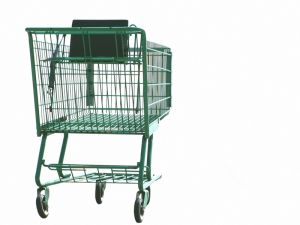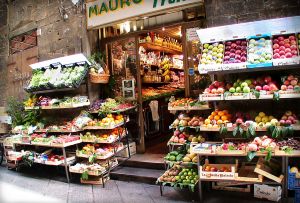You probably don’t realize it, mostly because it’s easy not to, but grocery stores have been psychologically manipulating us for years in order to make us buy more. It’s not surprising why they would want to do so. Like any business, they want your money. And so they design their stores in patterns for optimal consumption by buyers.
This is how they do it:
Basically, all they do is take basic principles of psychology and sociology and, well, very rudimentary knowledge of the human condition along with architectural and interior design layouts, and add it all up into a cocktail of manipulation that, because it’s so subtle, we can’t tell we’re being manipulated. One aspect of the human condition that grocery stores use to their advantage is that crowds of people move in predictable manners. We essentially move like elephants being herded when we go into many stores, but especially a grocery store. You would think that crowds of people aren’t predictable and that’s why so many police are called out when a big protest, e.g. Occupy Wall Street, takes place. But really a concentrated amount of people in large proportion gives the impression of chaos, though really act in very specific and predictable manners—which is what grocery stores are banking on. In fact, some customers have reported going to the grocery store and going in a different direction than they normally do and feeling vertigo. It’s cognitive displacement that gets ingrained within us after a prolonged period of time.
Another way grocery stores manipulate people is by making their products shiny. People can’t resist shiny things when compared to something dull and plain. That’s why they can sell cars and diamonds at such expensive prices despite their virtual uselessness—as in, a $500 car will get you to the same place that a $50,000 car will, though car dealerships are banking on you justifying why you need the latter rather than the former. But the other aspect of shiny things is that they catch our attention and draw our interest, making it that much more likely that we’ll buy whatever crap it is, despite the fact that it will break down in a few years.
If you’ve ever wondered why stores price their products as $4.99 rather than $5.00, then you’re not the first. In fact, studies have been conducted to understand why stores do this, and what they’ve found is, predictably, people suck at math and probably won’t use a calculator despite the fact that almost everyone has a calculator in the palm of their hand. The difference between the two aforementioned numbers is virtually nothing, but when you buy multiple products with similar disposition, add in sales tax, then you get a mass amount of people recalling horrible nightmares of being back in their high school algebra class staring at a blank sheet of paper that holds their future in graduating. Also, that one cent gives the impression that the product is cheaper, especially when you start getting into the hundreds, because while $499.99 is pretty much the same as $500.00, you can at least say it’s not $500 and being technically correct.
 Many grocery chains now have a bank and pharmacy in their store, despite the fact that those two things really have very little to do with food. But, perhaps they have more to do with food than you know. The first, and most obvious reason, as to why stores do this now is because they want to keep you in their store as long as possible, because the longer you’re in there the more likely you are to buy their products. What they promote as a form of convenience is really a method to make you hungrier (surrounding you with food) and thus hopefully making you buy, buy, buy.
Many grocery chains now have a bank and pharmacy in their store, despite the fact that those two things really have very little to do with food. But, perhaps they have more to do with food than you know. The first, and most obvious reason, as to why stores do this now is because they want to keep you in their store as long as possible, because the longer you’re in there the more likely you are to buy their products. What they promote as a form of convenience is really a method to make you hungrier (surrounding you with food) and thus hopefully making you buy, buy, buy.
The bank has a more obvious application: put the convenience of money right next to where people have to buy their food. It’s a bit surprising that other stores didn’t think of this, but the impulse to buy food is more innate and all-consuming than the desire to buy a good pair of shoes.
Another organizational method of grocery stores is to strategically place products so that the more prominent (read, rich) brands are easily viewable over the lesser known brands. And usually this works. People have become so inured with brand loyalty that you still see people actually arguing the difference between Pepsi and Coke—though there really isn’t one—or any other piece of crap product that’s filled with sugar, preservatives, and loads of shit that will kill you before you reach retirement.
Lastly, all of the aforementioned methods and components that make up your neighborhood grocery chain want to tap into your feeling of excitement by getting your brain to release dopamine, the chemical in your brain that essentially makes life slightly bearable at times. It’s not clear how grocery stores are able to get the dopamine running, or even if they are successful at all, but it is indicated that various levels of dopamine is released in the brain during shopping when the customer is excited. Granted, these aren’t dopamine levels equivalent to sex or drug use, but they are enough to stimulate the brain into thinking it’s experiencing something exciting by buying these great products at a fraction of the cost. Either way, the bottom line is for these stores to make money, and they’ll use whatever method is feasible, and legal, in order to achieve favorable sales, even at your expense.
___________________________________________________________
Your Grocery Store and You,




